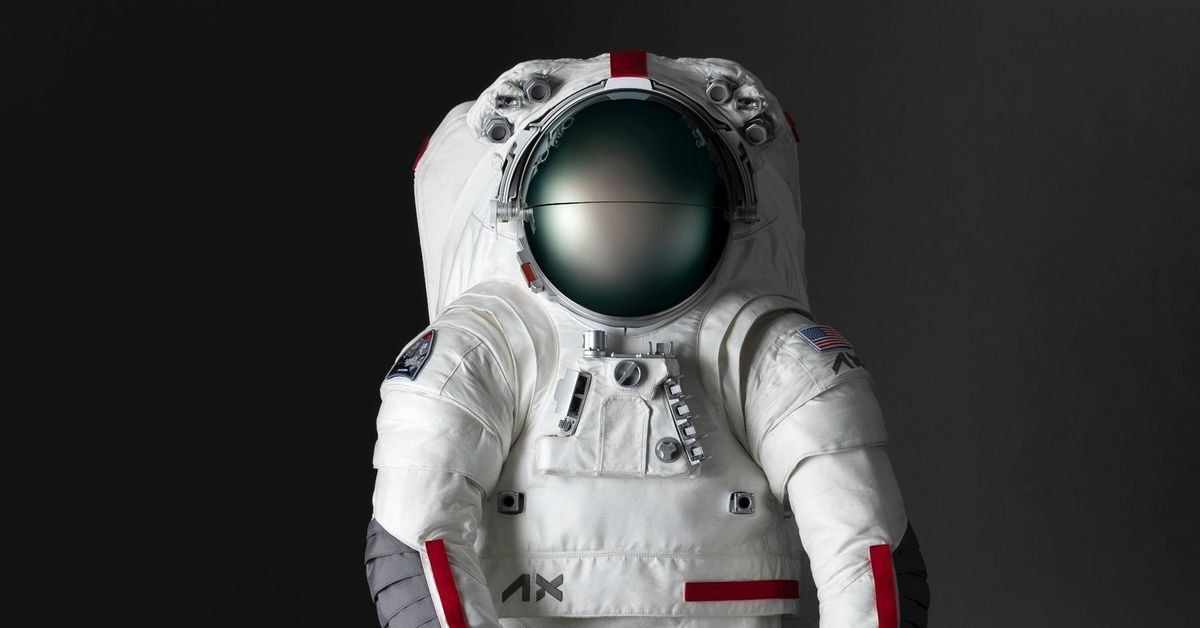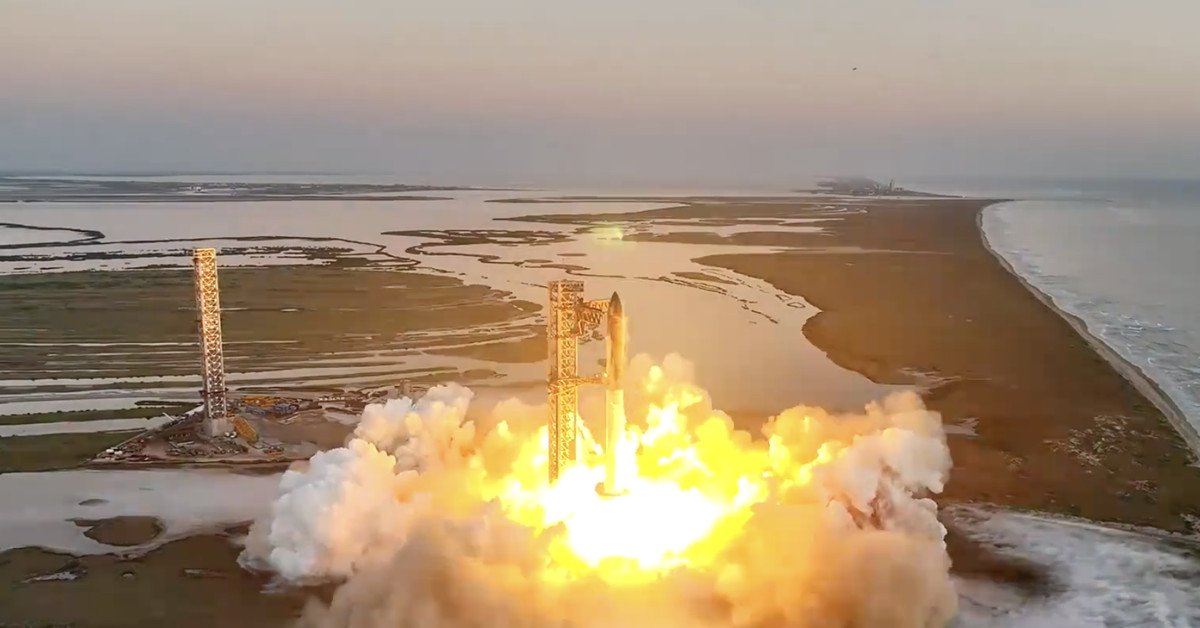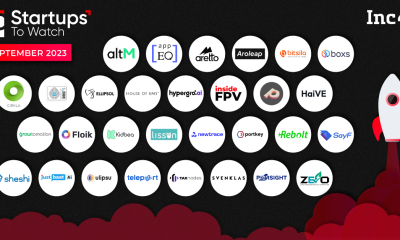Two days after Google cut a “world’s first” deal to purchase electricity from advanced nuclear reactors, Amazon announced three new agreements of its own today.
Science
Prada helped make a spacesuit

Space travel, it must be said, does not seem glamorous. You have to pee your pants and eat reconstituted roast beef for dinner. But future space flights might get a little fancier when the next moon-bound astronauts put on Axiom Space’s new spacesuit, designed in partnership with Prada. The Axiom Extravehicular Mobility Unit (AxEMU for short) can withstand the punishing conditions of the lunar South Pole — with a touch of sophistication that space apparel has been lacking, evidently.
Prada and Axiom collaborated on the outer layer of the suit, with the fashion house lending expertise on “high-performance materials, features, and sewing techniques.” In addition to protecting the wearer from the icy cold vacuum of space, the suit also aims to “visually inspire future space exploration.”
The suit includes a helmet and visor equipped with lights, an HD camera, and 4G/LTE communication. As you’d expect from haute couture, the gloves are custom made, the boots are designed for lunar terrain, and according to the press release it accommodates a wide range of crewmembers with “anthropomorphic sizing,” so I guess a cat could wear it, too. How chic!
Unfortunately it’ll be a while before we can see the suit on the red carpet, er, planet. The AxEMU will be worn by NASA astronauts on the Artemis III mission to the moon, scheduled for “no earlier” than September 2026.
Science
Amazon looks to advanced nuclear reactors to meet climate goals

Each deal supports the development of small modular reactors (SMRs), which can be one-tenth to one-quarter the size of a traditional nuclear power plant. If these projects make it to the finish line, SMRs would be a source of carbon pollution-free energy for big tech companies trying to salvage their climate goals by turning to nuclear energy.
Each deal supports the development of small modular reactors
Amazon signed an agreement with Energy Northwest, a consortium of public utilities in Washington state, to “enable the development” of four SMRs by the early 2030s. Energy Northwest says Amazon has agreed to “fund the initial feasibility phase” near an existing nuclear energy facility in Richland, Washington. The e-commerce giant would then be able to purchase electricity from the first four modules built with a combined capacity of 320 megawatts. The deal includes “the option to further build out the site” to 12 units generating up to 960MW, which Amazon says would be enough electricity to power 770,000 homes in the US. Additional electricity from the expanded site would be available to Amazon as well as other businesses and homes in the area.
Amazon is also investing in the startup X-energy, which is developing an advanced nuclear reactor design that’s expected to be used in the Energy Northwest project. Energy Northwest would ultimately build, own, and operate the reactors. It’s been exploring plans for a nuclear facility using X-energy’s high-temperature gas-cooled reactor design, Xe-100, since 2020.
X-energy announced a $500 million Series C-1 financing round today “anchored by” Amazon. Beyond the project in Washington, the money is supposed to support the “completion of X-energy’s reactor design and licensing” and the development of a fuel fabrication facility in Oak Ridge, Tennessee. X-energy says it’s “collaborating” with Amazon to bring more than 5,000MW of new SMR projects on line in the US by 2039, which it says would be the largest commercial deployment target of SMRs yet. To make it all happen, the two companies “plan to establish and standardize a deployment and financing model to develop projects in partnership with infrastructure and utility partners.”
In Virginia, utility company Dominion Energy nabbed a deal with Amazon to “explore the development of an SMR project” near its existing North Anna nuclear power station. Virginia is a hub for energy-hungry hyperscale data centers, and Dominion expects electricity demand in the state to double over the next 15 years. The SMR project with Amazon would be able to generate 300MW of power if it comes to fruition.
Nuclear energy has become an attractive source of energy for tech companies, including Amazon, Google, and Microsoft, that are struggling to meet commitments they’ve made on climate change. Data centers burn through a lot of electricity — those used to train AI even more so — and that means more greenhouse gas emissions unless those data centers run on carbon-free energy. Amazon, Google, and Microsoft all have larger carbon footprints today than they did when they made major climate commitments several years ago.
Nuclear reactors are also an appealing option for data centers that run around the clock because, unlike solar and wind farms, they can generate electricity regardless of the weather or time of day. SMRs are also supposed to be faster to build and easier to site than larger traditional nuclear power plants.
These SMR projects are subject to regulatory approval and could still face economic headwinds. The US Nuclear Regulatory Commission certified a design for a small modular reactor for the first time in January 2023, a design by a company called NuScale Power. But by November, after facing soaring costs, NuScale had to scrap its plans to build a highly anticipated demonstration power plant.
Big tech has also shown interest in traditional nuclear power plants. In March, Amazon Web Services announced its purchase of a data center campus powered by a nuclear power plant in Pennsylvania. Microsoft made a deal in September to help revive and purchase power from the shuttered Three Mile Island plant.
Nuclear energy still faces opposition from advocates concerned about the potential environmental and health risks that come with mining and enriching uranium for reactors and storing radioactive waste.
“It’s time for Big Tech to recommit to solutions that work and pose less risk to our environment and health, including making data centers as energy efficient as possible and committing them to be powered by new renewable energy sources,” Johanna Neumann, a senior director at the Environment America Research & Policy Center, said in a statement released after Google’s SMR announcement this week.
Science
Google inks nuclear deal for next-generation reactors

Google plans to buy electricity from next-generation nuclear reactors. It announced the deal yesterday, which it says is the world’s first corporate agreement to purchase electricity from advanced small modular reactors (SMRs) that are still under development.
Google inked the deal with engineering company Kairos Power, which plans to get its first SMR up and running by 2030. Google agreed to purchase electricity from “multiple” reactors that would be built through 2035.
Google needs a lot more clean energy to meet its climate goals while pursuing its AI ambitions. New nuclear technologies are still unproven at scale, but the hope is that they can provide carbon pollution-free electricity while solving some of the problems that come with traditional nuclear power plants.
“The trajectory of AI investments has added to the scale of the task needed”
“Obviously, the trajectory of AI investments has added to the scale of the task needed,” CEO Sundar Pichai said in an interview with Nikkei earlier this month. “We are now looking at additional investments, be it solar, and evaluating technologies like small modular nuclear reactors, etc.”
What sets Google apart with this deal is that it’s turning to next-generation reactors rather than traditional nuclear power plants. SMRs are roughly one-tenth to one-quarter the size in comparison. Their size and modular design are supposed to make them cheaper and easier to build and site than their larger predecessors. And unlike solar and wind energy, which fluctuate with the weather and time of day, nuclear power plants can generate electricity around the clock. Even with new reactor designs, however, there are still environmental and health concerns when it comes to mining and enriching uranium for reactors and storing radioactive waste.
The US Nuclear Regulatory Commission certified a design for a small modular reactor for the first time last year. Experts tell The Verge they expect the first SMRs to connect to US power grids in the early 2030s at the earliest, and big tech’s interest in nuclear energy seems to be giving the industry a boost.
Google says its deal with Kairos Power would eventually help bring up to 500MW of carbon-free energy to power grids in the US. Kairos broke ground on its first demonstration reactor in Tennessee in July.
“Having an agreement for multiple deployments is important to accelerate the commercialization of advanced nuclear energy by demonstrating the technical and market viability,” Jeff Olson, Kairos Power vice president of business development and finance, said in a press release.
Science
SpaceX launches Starship and catches its Super Heavy booster for the first time

SpaceX launched Starship for its fifth flight test at about 8:25AM ET from its South Texas launch site. The company succeeded in returning the Starship Super Heavy booster to its landing pad, where it was “caught” using arms on the launch tower that SpaceX refers to as the “chopsticks.”
The catch was a first for the booster, which the company hadn’t returned without incident before its previous flight test in June. The company’s next task is to return Starship, which is expected to splash down in the Indian Ocean, as it did before.
Liftoff was delayed slightly while it cleared boats out of its launch range, pushing the flight test to the edge of its 30-minute launch window. The Federal Aviation Administration gave SpaceX approval for the test flight on Saturday, October 12th. It had originally expected to clear the fifth Starship test in November, but the FAA and its partner agencies reportedly carried out their assessments faster than anticipated.
-

 Startup Stories1 year ago
Startup Stories1 year agoWhy Millennials, GenZs Are Riding The Investment Tech Wave In India
-

 Startup Stories1 year ago
Startup Stories1 year agoStartups That Caught Our Eyes In September 2023
-

 Startup Stories1 year ago
Startup Stories1 year agoHow Raaho Is Using Tech To Transform India’s Fragmented Commercial Trucking
-

 Startup Stories11 months ago
Startup Stories11 months agoMeet The 10 Indian Startup Gems In The Indian Jewellery Industry’s Crown
-

 Crptocurrency8 months ago
Crptocurrency8 months agoLither is Making Crypto Safe, Fun, and Profitable for Everyone!
-

 Startup Stories1 year ago
Startup Stories1 year agoHow Volt Money Is Unlocking The Value Of Mutual Funds With Secured Lending
-

 E-commerce1 year ago
E-commerce1 year agoTop Online Couponing Trends To Watch Out For In 2016
-

 Startup Stories1 year ago
Startup Stories1 year agoWhy Moscow-Based Kladana Considers Indian SME Sector As The Next Big Market For Cloud Computing




